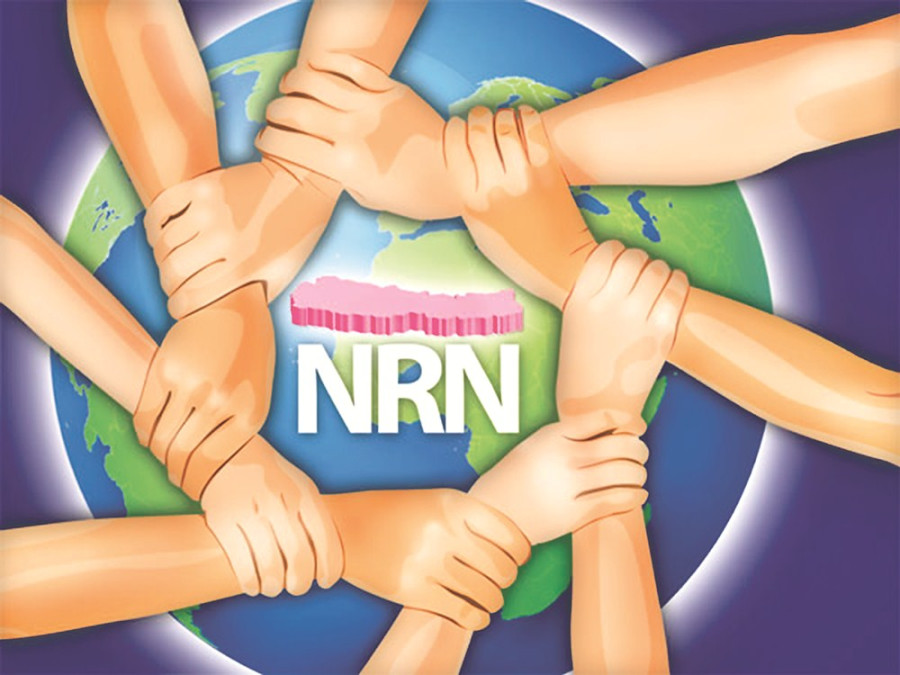Opinion
Unleashing diaspora potential
It is imperative for Nepal’s growth that second generation Nepalis feel connected to the country and keep in touch with it
Sujeev Shakya
In New Jersey, an eastern US state, the Non-Resident Nepali Association (NRNA) held its 9th regional conference that was attended by Nepalis from around the world. From a small community that was trying to establish its identity and get access to dual citizenship and the opportunities accompanying it, the NRNA has grown into a larger organisation with multiple issues to deal with. It is estimated that over 4.5 million Nepalis live outside the Saarc region. Out of them, around 3 million go to work in different countries and return, while about 1.5 million have taken citizenship of another country. Addressing the issues of diverse segments of the Nepali diaspora and coping with changing times continue to be a challenge for the NRNA as the world has moved a long way since the association’s inception in 2003. So it has now taken on the challenge of re-calibrating itself through the ‘NRNA Vision 2020 and Beyond’.
Global benchmarking
With the National Coordination Council in over 70 countries and Nepalis in over 100 countries, the NRNA needs to find global benchmarks of functioning and move away from the structuring and working style of Nepali NGOs that live from one election to another. The current membership base of 50,000 is only a fraction of the 4.5 million people, who continuously need help, support and opportunities of different kinds. The organisation needs to consider whether it can adopt a global model like the Rotary International, where small city, zonal, national and continent level organisational structure can be developed.
Further, the organisation needs to split itself between a part that looks after the interests of its members and another that does charitable work. For the latter, perhaps a global foundation needs to be created that is based in a country with strict governance codes, accountability and transparency. There are many institutions that are willing to partner with it, but winning their trust will be vital for things to materialise.
It is also important to ensure that the governance structure of the organisation is fixed, with a voluntary elected council and a strong secretariat that hires the best of global talents. Money is the least of the problems to bring about this structural change; it is the mindset that will make the real difference.
Keeping politics out
Unfortunately, the Nepali diaspora has inherited all the problems of Nepali politics, with groups affiliated to different political parties present in diaspora communities. The Nepali political parties continue to salivate over the thought of a large vote bank and never want to let go of the opportunity to deepen their penetration. And the political parties recruit a few sycophants, who may provide some funds in exchange of favours, but they have tarnished the diaspora’s image. This has made a big chunk of people avoid any diaspora organisation.
If the diaspora community wants to be engaged in politics, why does it not engage in the politics of the adopted country instead of pouring hate comments about Nepal on social media? With the diaspora numbers swelling in places like the US, it is important for Nepalis to engage in US politics using their community as a support base and a collective action forum for addressing their grievances.
Exciting second generation
Sadly, there were very few young people and women in the audience in the NRNA conference. While it is easy to comment over drinks and on social media about old Nepali political leaders not making space for the new generation, it is important to also think about how welcoming the diaspora associations have been to the youths. The organisation needs to reflect on why the second generation Nepalis in the US will come to their conferences and listen to politicians making long speeches in Nepali? Why would they engage with an organisation whose website they cannot engage with? Usage of Nepali is a cultural tool, but as a form of nationalism, it is also used as a good veil to cover incompetency and the unwillingness to change and compete based on global standards.
The difference between Ethiopia and Somalia is that in the former, the second generation diaspora population kept returning to and keeping in touch with their country unlike in the latter where people did not care much. It is imperative for Nepal’s growth that the second generation Nepalis around the world—who have better education, financial resources and networks than the earlier generation—feel connected to Nepal and keep in touch with it. The diaspora organisations need to think how to get these second generation people excited, by building some kind of exchange programmes through work or education. The clash of generation is universal, but it is also very clear from the experience of many countries that those that have understood how to unleash the potential of the next generation have done well.
It is easy to be negative and make comments that one does not have to be accountable for, but difficult to be part of a process that tries to effect change. The NRNA leadership has taken an uphill task to recalibrate itself. Hopefully, it will get translated into concrete action.




 7.12°C Kathmandu
7.12°C Kathmandu










